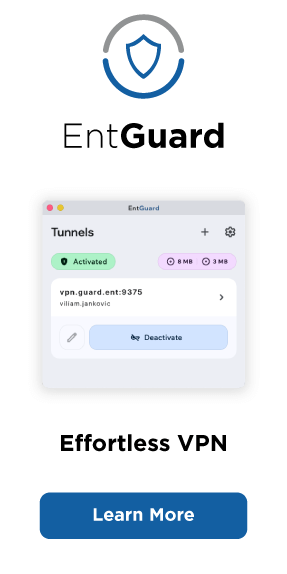ONAP (Open Network Automation Platform) is quite a trend in the contemporary SDN world. It is a broad project, consisting of a variety of sub-projects (or components), which together form a network function orchestration and automation platform. Several enterprises are active in ONAP and its growth is accelerating rapidly. PANTHEON.tech is a proud contributor as well.
What is ONAP?
The platform itself emerged from the AT&T ECOMP (Enhanced Control, Orchestration, Management & Policy) and Open-O (Open Orchestrator) initiatives. ONAP is an open-source software platform, that offers a robust, real-time, policy-driven orchestration and automation framework, for physical and virtual network functions. It exists above the infrastructure layer, which automates the network.
ONAP enables end-users to connect services through the infrastructure. It allows network scaling and VNF/CNF implementations in a fully automated manner. Among other benefits, like:
- Bring agile deployment & best practices to the telecom world
- Add & deploy new features on a whim
- Improve network efficiency & sink costs
Its goal is to enable operators and developers, networks, IT, and the cloud to quickly automate new technologies and support full lifecycle management. It is capable of managing (build, plan, orchestrate) Virtual Network Functions (VNF), as well as Software-Defined Networks (SDN).
ONAP’s high-level architecture involves numerous software subsystems (components). PANTHEON.tech is involved in multiple ONAP projects, but mostly around controllers (like SDN-C). For a detailed view, visit the official wiki page for the architecture of ONAP.
SDN-C
SDN-C is one of the components of ONAP – the SDN controller. It is basically OpenDaylight, with additional Directed Graph Execution capabilities. In terms of architecture, ONAP SDN-C is composed of multiple Docker containers.
Directed Graph Creator runs one of these containers. It’s a user-friendly web UI, that can be used to create directed graphs. Another container runs the Admin Portal. The next one runs the relational database, which is the focal point of the implementation of SDN-C and used for each container. Lastly, the SDN-C container, that runs the controller itself.
This component is of particular interest to us because it has all the rationale behind the execution of graphs that are directed. We have previously shown, how lighty.io can integrate well with SDN-C and drastically improve performance.
According to the latest 5G use-case paper for ONAP, SDN-C has managed to implement “radio-related optimizations through the SDN-R sub-project and support for the A1 interface”.
CDS: Controller Design Studio
As the official documentation puts it:
CDS Designer UI is a framework to automate the resolution of resources for instantiation and any config provisioning operation, such as day0, day1, or day2 configuration.
CDS has both design-time & run-time activities. During design time, the designer can define what actions are required for a given service, along with anything comprising the action. The design produces a CBA Package. Its content is driven by a catalog of reusable data dictionaries and components, delivering a reusable and simplified self-service experience.
CDS enables users to adapt resources in a way, where no direct code-changes are needed. The Design Studio gives users, not only developers, the option to customize the system, to meet the customer’s demands. The two main components of CDS are the frontend (GUI) and backend (run-time). It is possible to run CDS in Kubernetes or an IDE of your choice.
One interesting use-case shows the creation of a WordPress CNF via CDS.
SO: Service Orchestration
The primary role of SO is the automation of the provisioning operations of end-to-end service instances. In favor of overall end-to-end service instantiation, processes, and maintenance, SO is accountable for the instantiation and setup of VNFs.
To accomplish its purpose, Service Orchestration performs well-defined processes – usually triggered by receiving service requests, created by other ONAP components, or by Order Lifecycle Management in the BSS layer.
The orchestration procedure is either manually developed or received from ONAP’s Service Design and Development (SDC) portion, where all service designs are created for consumption and exposed/distributed.
The latest achievement of the Service Orchestrator is the implementation of new workflows such as:
- CSMF – Communication Service Management Function
- NSMF – Network Slice Management Function
- NSSMF – Network Slice Sub-Net Management Function
DMaaP: Data Movement as a Platform
The DMaaP component is a data movement service, which transports and processes data from a selected source to the desired target. It is capable of transferring data and messages between ONAP components, data filtering/compression/routing, as well as message routing and batch/event-based processing.
DCAE: Data Collection Analytics & Events
The Data Collection Analytics & Events component does exactly what’s in its name – gather performance, usage & configuration data from the managed environment. The component guards events in a sense – if something significant occurs or an anomaly is detected, DCAE takes appropriate actions.
The component collects and stores data that is necessary for analysis while providing a framework for the development of needed analytics.
DCAE: Collectors and other microservices required to support the telemetry collection for 5G network optimization; this includes the O1 interface from O-RAN.
A&AI: Active & Available Inventory
The Active & Available Inventory functionality offers real-time views of relationships with the products and services operated by them. It gives real-time insights into the managed products and services, as well as their connections.
A&AI is a list of properties that are active, available, and allocated. It establishes a multi-dimensional relationship between the programs and infrastructure under administration. It provides interfaces for dynamic network topology requests, both canned and ad-hoc network topology queries.
Recently AAI gained schema support for 5G service design and slicing models.
Is ONAP worth it?
Yes, it is. Since you have come up to this conclusion, then you might feel that ONAP is the right fit for your needs. It is an enormous project with around 20 components.
If you feel overwhelmed, don’t worry and leave it to the experts – contact PANTHEON.tech today for your ONAP integration needs!



![[What Is] VLAN & VXLAN](https://pantheon.tech/wp-content/uploads/2025/04/vxlan-vpp-thumb-400x250.png)
![[What Is] Whitebox Networking?](https://pantheon.tech/wp-content/uploads/2025/03/whitebox-net-thumb-400x250.png)
![[What Is] BGP EVPN?](https://pantheon.tech/wp-content/uploads/2025/03/bgp-evpn-thumb-400x250.png)